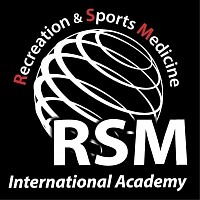Orthopedic Massage Course for Breathing & Spine Mobility
Introduction: Orthopedic Massage for Breathing & Spinal Mobility
The Orthopedic Massage Course at RSM focuses on optimizing thoracic and abdominal breathing through improved spinal mobility. Participants will explore how the facet joints and supporting muscles of the spine influence posture, gaining a deep understanding of the biomechanics involved.
The course also covers spinal assessments and treatment of postural issues like lumbar lordosis, kyphosis, and scoliosis, teaching techniques to correct muscle imbalances.
Students will master visual and palpation tissue massage, dynamic myofascial release, and HVLA/LVLA techniques to treat spinal and musculoskeletal issues effectively.
Schedule and Course Fee
🔸 6,000Baht
(approx. EUR 158 / USD 177)
- 2-Day Intensive Course, Saturday & Sunday
- Training 10:00-12:00 / 13:00-15:00
- ( Total Duration: 8 hours )
Optimizing Respiratory Mechanics for Enhanced Thoracic Spine Mobility
With approximately 17,000 to 30,000 breaths per day, optimizing respiratory mechanics is essential for improving spinal mobility, thoracic flexibility, and rib cage function. This course emphasizes the importance of two primary breathing methods: chest breathing and abdominal breathing, and how improving facet joint mobility can positively impact these techniques. By understanding the role of facet joints in spinal movement, participants can enhance their breathing patterns, leading to better spine mobility and effective postural correction.
Utilizing spine mobilization techniques to adjust chest and abdominal breathing helps alleviate chronic back pain, neck pain, and lower back pain by reducing muscle tension and restoring natural movement. This comprehensive approach supports long-term pain relief and enhances recovery through better sleep quality
Orthopedic Massage for Optimizing Respiratory Mechanics: Enhance Thoracic spine mobility, Posture, and Sleep Quality
Our orthopedic massage course is designed to enhance respiratory mechanics through deep tissue massage, dynamic myofascial release, and targeted activation of the intercostal muscles and diaphragm. These techniques aim to improve chest cavity expansion, breathing efficiency, and postural alignment, contributing to chronic pain relief and better sleep quality.
The course also emphasizes diaphragmatic mobilization as a key component for maximizing breathing capacity and promoting efficient respiratory patterns. Grounded in sports medicine, it integrates advanced strategies in respiratory mechanics and spinal mobilization, offering a comprehensive approach to improving thoracic mobility and posture correction.
Intra-Abdominal Wall Pressure and Diaphragmatic Activation: Optimizing Lumbar Spine Mobility
The relationship between diaphragmatic activation and intra-abdominal pressure (IAP) is crucial for core muscle engagement, providing support for a stable posture, lumbar mobility, and dynamic spinal alignment. Proper regulation of IAP and diaphragm function promotes effective activation of both chest and abdominal breathing, significantly influencing comprehensive respiratory mechanics across all movements.
This course teaches massage and stretching techniques to optimize overall spinal mobility, integrating the movements of the lumbar spine, thoracic spine, and ribcage. By enhancing core muscle activation, participants can improve posture, reduce pain, and support functional breathing patterns, which benefit both daily activities and sports performance.
Cervical Spine Mobilization Techniques: Advanced Massage Strategies for Enhanced Breathing and Posture Correction
This course highlights the significance of cervical mobility and its impact on spinal alignment. Malalignment of the cervical spine can cause nerve entrapment, leading to symptoms like numbness and tingling in the neck, shoulders, and arms. Conditions such as thoracic outlet syndrome illustrate how cervical dysfunction can contribute to nerve compression and pain, including double crush syndrome.
With the head comprising about 8% to 10% of body weight, restricted cervical movement places stress on the thoracic spine and lumbar region. This malalignment negatively affects spinal function. A forward head posture can reduce thoracic capacity, leading to shallow breathing and compromised respiratory function. Addressing cervical dysfunction is essential for improved spinal mobility and relief from chronic pain.
Optimizing Outcomes with LVLA and HVLA Techniques: Enhancing Spine Mobilization and Breathing
This course covers both HVLA (thrust) and LVLA (non-thrust) techniques, each offering unique benefits. Research has shown that HVLA can sometimes lead to limitations in joint mobility the following day due to minor discomfort in surrounding soft tissues. A study published in the Journal of Manipulative and Physiological Therapeutics found that HVLA can result in temporary restrictions in range of motion.
Participants will engage with advanced educational tools, including anatomical models and high-resolution imagery, based on Hironori Ikeda’s over 25 years of practical experience in sports medicine, as well as hands-on anatomical studies conducted at Chiang Mai University’s Faculty of Medicine. The course will primarily focus on gentle LVLA techniques while also teaching the safe integration of HVLA methods when appropriate.
Practical Anatomy and Educational Tools
Participants will engage with advanced educational tools, including anatomical models, high-resolution imagery, and specialized applications designed for medical professionals. These resources, drawing on over 25 years of clinical experience and insights from anatomical studies at Chiang Mai University’s Faculty of Medicine, provide a comprehensive learning experience. This holistic approach ensures that therapists, regardless of their experience level, can refine their skills and apply evidence-based techniques effectively in their practice.
Utilizing Mobile Health Applications for Respiratory and Cardiovascular Monitoring
This course introduces participants to mobile healthcare applications commonly used on devices like iPhones and Android phones. These apps are valuable tools for tracking and analyzing key indicators such as heart rate, breathing rate, and VO2 max. By using these applications, participants can gain insights into respiratory health and cardiovascular fitness improvements. The data provided by these tools help in monitoring clients’ progress and tailoring interventions to enhance overall health outcomes.
This integration of technology into healthcare practices offers a modern, data-driven approach to managing and improving respiratory and cardiovascular health.
Enhancing Professional Skills
By the end of the course, therapists will have gained advanced knowledge and practical skills in spine mobility massage. This expertise not only enhances their professional repertoire but also enables them to provide more effective, satisfying treatments to their clients.
The course is designed not just as a learning experience but as a transformative journey towards becoming a more skilled, knowledgeable, and effective massage therapist, capable of addressing a wide range of spinal mobility issues with confidence and competence.













